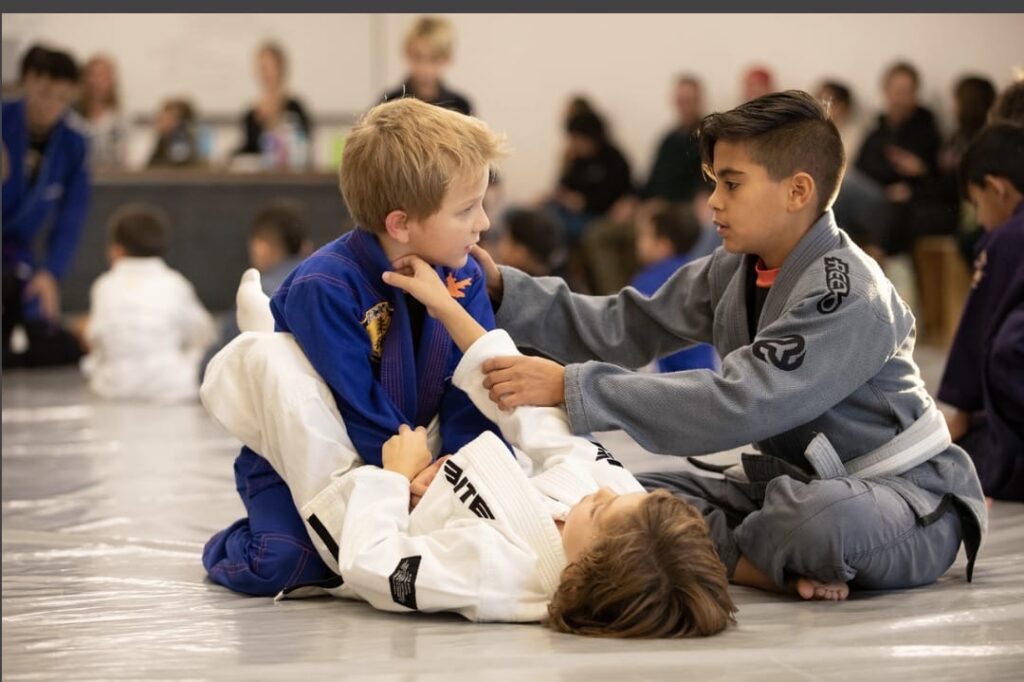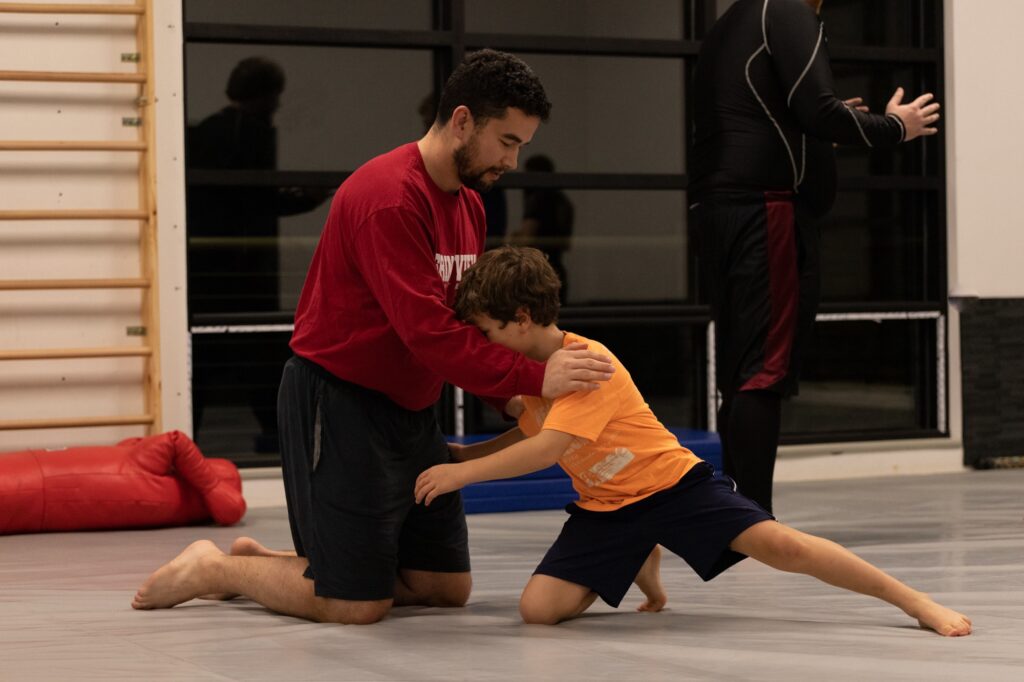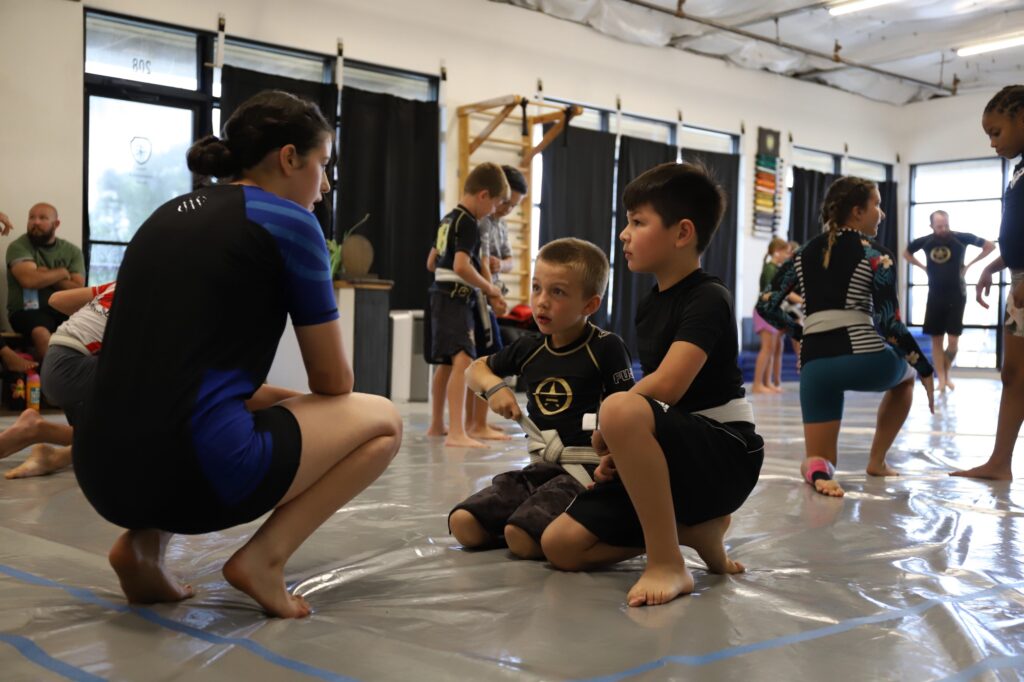Teaching martial arts to young children is a rewarding journey that requires careful planning and a focus on safety above all else. When it comes to introducing submissions like joint locks and chokes, particularly to peewees (ages 4-7) and kids, a thoughtful approach is essential to ensure they learn effectively while staying safe.

Building a Strong Foundation
Before diving into submissions, it’s crucial to establish a solid foundation. This begins with teaching children the importance of safety and respect within the dojo. They should understand that martial arts techniques are not to be used outside of supervised training sessions. Teaching them fundamental positions like mount, side control, closed guard, and seat belt with hooks lays the groundwork for safe and effective submission techniques later on.

Introducing Submissions with Care
Choosing age-appropriate techniques is paramount. Opting for basic joint locks and chokes that are safe and straightforward helps children grasp the concepts without feeling overwhelmed. More importantly, children must learn the importance of control and restraint when applying these techniques. Emphasizing control not only prevents injury but also reinforces the discipline that is fundamental to martial arts practice. At El Dorado Hills Jiu Jitsu, we have looked to the IBJJF (International Brazilian Jiu Jitsu Federation) as the golden standard for what submissions are age appropriate in training and competition.

The Art of Teaching
Effective teaching goes beyond demonstrating techniques. It involves positive reinforcement and progressive learning. Children thrive when they feel encouraged and supported in their efforts. Praise for their commitment and improvements, rather than focusing solely on outcomes, helps build their confidence and motivation.
Safety Beyond the Dojo
One of the most critical aspects of teaching submissions to children is ensuring they understand the boundaries of practice. They must grasp that submissions, especially chokes, should only be practiced under the supervision of instructors. This understanding not only keeps them safe but also reinforces the discipline and responsibility that martial arts instills.
Engaging Parents and Guardians
Parental involvement is invaluable in reinforcing the lessons learned in class. Educating parents about the techniques being taught and the importance of safety practices at home creates a cohesive learning environment for children. It also ensures that the principles of martial arts extend beyond the dojo walls, promoting a culture of respect and responsibility in everyday life.
Teaching submissions to peewees and kids in martial arts is not just about mastering techniques; it’s about nurturing their physical and emotional growth. By prioritizing safety, building a strong foundation, and fostering a supportive learning environment, parents and coaches play a crucial role in shaping young martial artists. Together, we can help children develop not only martial arts skills but also invaluable life skills that will serve them well into adulthood.

Coach Danny
